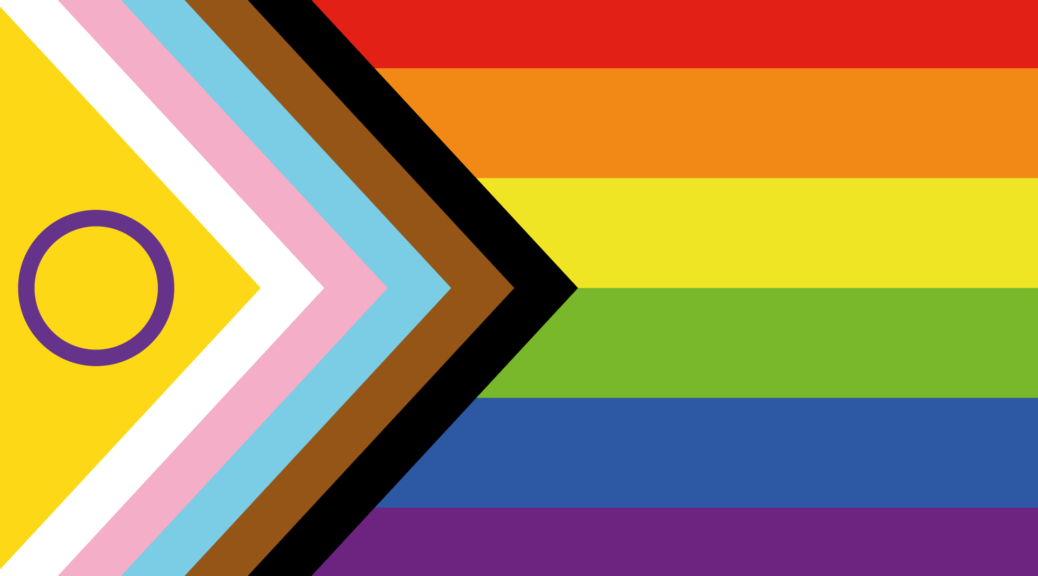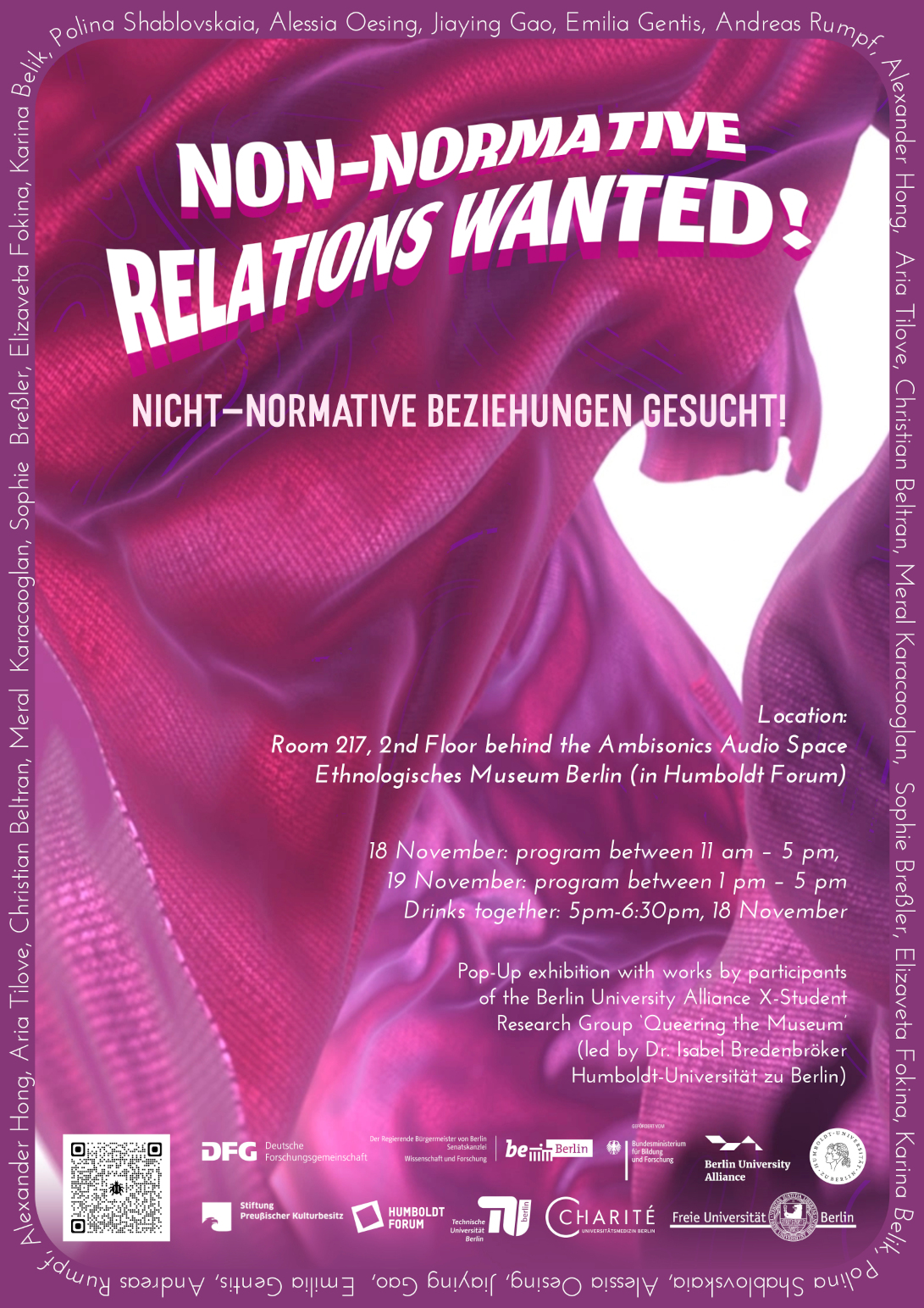The DFG-funded postdoctoral project “Queering the museum? An anthropological toolkit for intersectional relations in the arts” is based at CARMAH (Centre for Anthropological Research in Museums and Heritage) and the Helmholtz-Zentrum für Kulturtechnik at Humboldt-Universität zu Berlin.
Project management:
Isabel Bredenbröker
Current output:
Berlin University Alliance X-Student Research Group ‘Queering the Museum’
Summer Term 2023: Exhibition ‘Non-normative relations wanted’
Queering as proposition for collaborative student research
Isabel Bredenbröker
“Queerness is not here yet. Queerness is an ideality. Put another way, we are not yet queer. We may never touch queerness, but we can feel it as the warm illumination of a horizon imbued with potentiality.” – José Esteban Muñoz, Cruising Utopia. The Then and There of Queer Futurity
“I would like for us to replace every ‘we’ in Esteban Muñoz’s quote with ‘the Humboldt Forum’.” – Bonaventure Soh Bejeng Ndikung, Those Who Are Dead Are Not Ever Gone
The exhibition ‘Non-normative relations wanted’ was the product of a collective research effort in a seminar context. Student participants from different disciplines and at all levels from BA to PhD came together in the first cohort of an X-Student Research Group, funded by the Berlin University Alliance. This group accompanies my DFG funded research project ‘Queering the museum? An anthropological toolkit for intersectional relations in the arts’, a project in which I work on and with the Ethnological Museum Berlin. As prompts for the group, I proposed to investigate what non-normative or queer relations exist around ethnographic museum displays and collections. I also asked how we could contribute to realizing such kinds of relational and non-normative displays by using queer methods.
Discussing texts from queer theory, the anthropology of kinship, museum studies, and the anthropology of art, the seminar opened a space for speculative thought, inviting participants to propose approaches, artworks, talks, methods and ideas that productively highlight queer relations around ethnographic collection objects. Paired with hands-on research at the museum and conversations with museum staff, the seminar offered a laboratory for creative approaches to the museum environment, informed by empirical and ethnographic engagement with the museum.
As the contributions to this group presentation show, queer methods and display approaches can highlight different subject matters and employ different strategies. Queering as a methodology in museum contexts is slowly becoming more and more present, as for example represented by the local network Museen Queeren Berlin. Queering museums may include the participation and presentation of queer lives and identities, but going beyond that, also embark from queer experiences of marginalization that inform different ways of displaying, relating, identifying, loving, and thinking the future. In all cases, queering critically challenges normative hegemonic structures. In relation to ethnographic museums and collections, queering must think through and with colonial and other historical entanglements while not simply dwelling in the past but instead making connections to our present and futures via collections and museums. Ideally, queering can then also help to foster dialogue that goes beyond established frames of identity and reference. As the queer studies scholar José Esteban Muñoz writes, this may forever be something to aspire to while driven by the hope for a better future.


